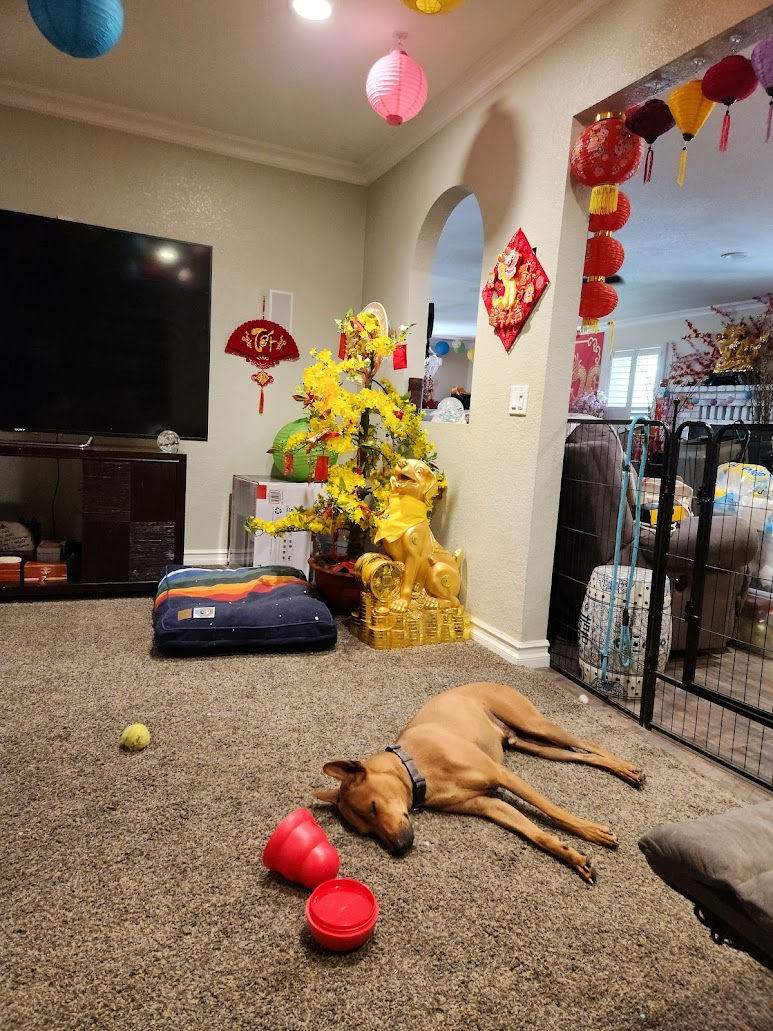Understanding and Managing Resource Guarding in Vietnamese Phu Quoc Ridgeback Dogs
- Phu Quoc Ridgeback Kennel Club

- Jul 25
- 4 min read
Updated: Sep 25

Resource guarding is a common behavioral issue in dogs where they exhibit aggressive or defensive behaviors to protect valued items such as food, toys, bones, territory, or even their favorite human. While this behavior is natural from an evolutionary standpoint, it can become problematic in domestic settings, particularly with strong-willed breeds like the Vietnamese Phu Quoc Ridgeback.
The Phu Quoc Ridgeback is a rare and ancient breed known for its intelligence, independence, and strong prey drive. These traits, while advantageous in their native hunting environment, can make resource guarding more challenging to manage. Today, we will discuss the causes of resource guarding in Phu Quoc Ridgebacks, prevention strategies, and step-by-step training methods to address the issue effectively and humanely.
Section 1: Understanding Resource Guarding in Phu Quoc Ridgebacks
1.1 What is Resource Guarding?
Resource guarding refers to behaviors a dog uses to control access to items they perceive as valuable, ie food, toy or their human. These behaviors can include:
Growling, snapping, or biting when approached while eating or chewing.
Stiffening or hovering over an object.
Running away with the item to prevent access.
In Phu Quoc Ridgebacks, guarding tendencies may be more pronounced due to their independent nature and historical role as hunters.
1.2 Why Do Phu Quoc Ridgebacks Guard Resources?
Several factors contribute to resource guarding in this breed:
a) Genetic Predisposition
As a primitive breed, Phu Quoc Ridgebacks have strong survival instincts. In the wild, guarding food and territory ensures survival, and these instincts may persist even in domesticated dogs.
b) Lack of Early Socialization
Puppies that are not exposed to gentle handling around food and toys may develop guarding tendencies. Early positive experiences are crucial in preventing this behavior.
c) Competition in Multi-Dog Households
If a Phu Quoc Ridgeback has had to compete for resources (e.g., in a shelter or with littermates), they may guard more aggressively.

Section 2: Preventing Resource Guarding in Phu Quoc Ridgebacks
Prevention is always better than correction. The following strategies can help reduce the likelihood of resource guarding in Phu Quoc Ridgeback puppies and adults:
2.1 Early Socialization and Handling
Hand-Feeding: Hand-feeding meals establishes trust and teaches the puppy that human presence near food is positive.
Gentle Toy Exchanges: Trade toys for high-value treats to create positive associations with giving up items.
2.2 Structured Feeding Routines
Feed at consistent times to reduce anxiety around food scarcity.
Avoid free-feeding if the dog shows guarding tendencies, as structured meals help establish boundaries.
2.3 Teaching "Drop It" and "Leave It" Early
These commands are essential for managing guarding behaviors. Use positive reinforcement to reward compliance.
Section 3: Correcting Resource Guarding in Adult Phu Quoc Ridgebacks
If a Phu Quoc Ridgeback already exhibits guarding behaviors, a systematic training approach is necessary.
3.1 Assessing the Severity of Guarding
Mild Guarding: Dog stiffens or growls but does not escalate.
Moderate Guarding: Dog snarls, snaps, or lunges when approached.
Severe Guarding: Dog bites or attacks when challenged.
Severe cases may require professional help from a certified dog behaviorist.

3.2 Step-by-Step Training Methods
a) Counter-Conditioning and Desensitization
Goal: Change the dog’s emotional response to people approaching their resources.
Step 1: Identify the Guarded Resource
Food, bones, toys, or sleeping areas.
Step 2: Establish a Safe Distance
Start far enough away that the dog does not react.
Step 3: Toss High-Value Treats
While the dog is eating, toss delicious treats (e.g., chicken, cheese) near their bowl, then walk away.
Step 4: Gradually Decrease Distance
Over sessions, move closer before tossing treats.
Step 5: Hand-Feed While Eating
Gently add food to the bowl while the dog eats, pairing it with praise.
b) The "Trade-Up" Game
Teach the dog that giving up an item leads to something better.
Offer a lower-value item (e.g., a chew toy).
Show a high-value treat (e.g., meat) and say, "Drop it."
When the dog releases the toy, reward them immediately.
Return the original item after they finish the treat (if safe).
c) Teaching "Leave It" and "Drop It"
Use positive reinforcement to reinforce these commands in non-stressful situations before applying them to guarded items.
3.3 Managing the Environment
Avoid Triggers: Do not take items forcibly from the dog.
Use Barriers: Feed dogs separately in multi-dog homes.
Provide Enrichment: Mental stimulation reduces anxiety-driven guarding.

Section 4: When to Seek Professional Help
If the dog:
Continues to growl over resources
Has bitten someone over resources.
Does not improve despite consistent training.
Shows extreme fear or aggression.
Final Thoughts
Resource guarding in Vietnamese Phu Quoc Ridgebacks requires a patient, structured approach that respects their independent nature while reinforcing positive behaviors. Early prevention through socialization, structured training, and counter-conditioning can significantly reduce guarding tendencies. For adult dogs, gradual desensitization, trade-up exercises, and environmental management are key. Understanding the breed’s unique traits ensures effective and humane training, leading to a safer, happier relationship between dog and owner.
By implementing these strategies, owners can help their Phu Quoc Ridgebacks overcome resource guarding while maintaining the breed’s natural confidence and intelligence.
Where to get more information:
Phu Quoc Ridgeback Kennel Club
Facebook Phu Quoc Dog Forum






Comments